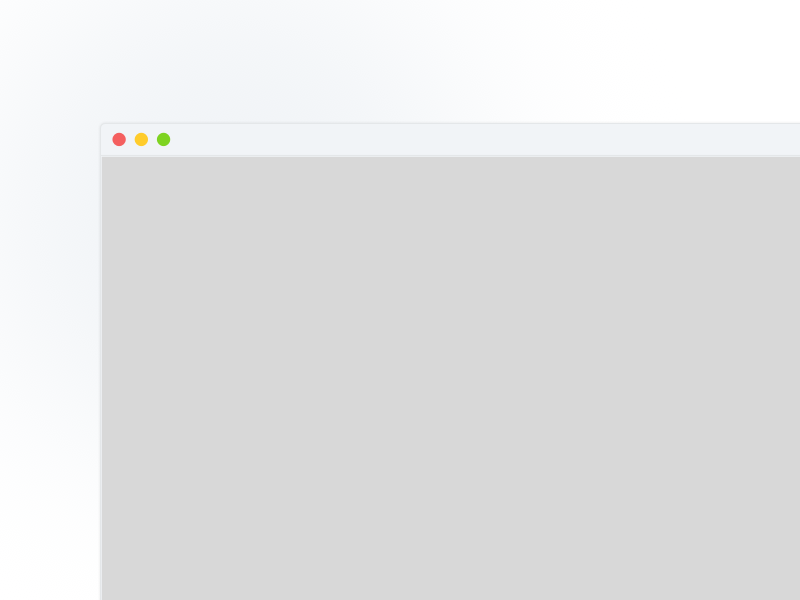
It is not easy for everyone to learn HTML/CSS/Javascript. There is of course one thing that makes designing in the browser difficult and that’s a steep learning curve. You are bridging the gap between design and engineering, making engineers work on more challenging aspects of development = much happier engineers.
#Sketch ui browser bar software
You don’t need expensive prototyping software anymore.You actually think more about how a hover state should animate, or how you can solve the problems better with interaction. Now in each Calcite document, click the dropdown in. Animation is no longer an afterthought. Importing Figma files Click the Import button in the top right of the Figma toolbar.Less questions and meetings with stakeholders, clients, engineers = Time saved = Money saved.

When usertesting, you see how users really interact with it.You see something that’s looking off? You can fix it right away. You can easily iterate on your design without having an engineer to help you.No more spending time measuring every pixel before handing it over to engineers.Now you only have one canvas, the browser – and it’s interactive by default. The end of creating hundreds of artboards.Everything looks the way as your users will see it. state is as a mini-drawer at the same elevation as the content, clipped by the app bar. I’ve personally found that there are so many benefits by moving to the browser: Navigation drawers provide access to destinations in your app. I believe that in order to know how it works and where it breaks, you should see and interact with the material in the environment, in which it will live.
However, for calls to action, also include a text label to provide key details to others looking at your wireframes.In order for design to get closer to implementation, designers should move as fast as possible to the browser. Generally, a basic rectangle with a line or an arrow to represent that it takes the user somewhere else is best. Buttons can be represented in many different ways.To show selection, checkboxes should have a check and radio buttons will be filled in. Checkbox and radio buttons have a square or circle, respectively, and a line to represent text.Dropdowns are made of a rectangle and a caret.Don’t forget to add calls to action or show selection, as these details help others understand your design idea. If you’re wireframing several screens that are part of a flow, you may also have progress bars and dialogs. Generally, these details are small selection-related components like buttons, dropdowns, checkboxes, or ratio buttons, but can also include text fields or any remaining single lines of body copy. These are most often found in static menu bars. Most wireframes will have a header, body copy, and possibly an image. Links that take you to pages that are equal to the current page in the web hierarchy. Start by finding out what device you should optimize for. Let’s see how it compares to Figma.- Adaptive layout: auto layout, constraints- Plugin. For mobile, the dimensions will range based on the specific device (e.g., tablet, various-size phones). Sketch just added collaboration and made a big move into subscription.For web wireframes, some common breakpoint sizes are 1024x768 pixels and 1920x1080 pixels.
#Sketch ui browser bar download
Free download related to Sketch UI Browser design resources, use in your designs or use as a base in your favorite design program, PSD, Sketch, Adobe Xd or Figma. For a higher-fidelity wireframe, here are some starting dimensions: Psd Sketch UI Browser UI Design Resources. This ratio doesn’t have to be precise especially if you are sketching by hand. Step 1: Identify your browser-window or device aspect ratio. Here is a step-by-step guide to get you sketching quickly.
#Sketch ui browser bar how to
If you know how to sketch these basic pieces, you can focus on getting your idea right rather than on how to draw. There are some common components that are used in wireframes time and again. Use physical constraints to prevent obsessing over tiny aesthetic details:


The general principles hold true for everyone: Messy is completely fine and expected (especially for low-fidelity wireframes). Elsewhere we shared ideas for helping stakeholders get comfortable with sketching. Depending on their purpose, they can vary in fidelity - from quick sketches to detailed representations of the final design.įor people with limited or no drawing abilities, wireframing can be daunting. Wireframes visualize a user path or flow, as well as page layouts, information hierarchy, and even interactions.


 0 kommentar(er)
0 kommentar(er)
